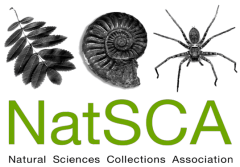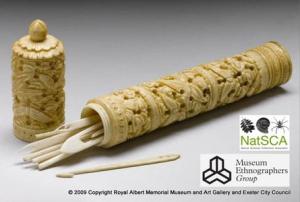This event is for staff and volunteers who work with museum collections.
Museum staff caring for collections will understand how important it is to be able to identify the materials objects are made from. By working with colleagues across different fields of expertise, collections become accessible. Managing knowledge of related legislation ensures that collection management is done responsibly and ethically.
Historic items often employ ivory as a decorative element, but is it elephant ivory or walrus ivory? Do you know the difference between them? Items of jewellery and other items brought to the UK over 100 years ago were sometimes decorated with animal and human remains; bone, horn and teeth. But would you be able to identify them? This workshop will examine snake, fish and whale bone and even the teeth of a wild cat and dogs. With anything made from bone one needs to be able to identify the species of animal, indeed it could even be human. With this in mind, museum staff should be aware of the current CITES and Human Tissue Act legislation.
This workshop aims to provide museum professionals and students with an opportunity to learn how to identify raw materials and understand how current legislation can guide best practice in the museum environment.
Please bring your own lunch.
This is a joint NatSCA - MEG (Museum Ethnographers Group) workshop
Course leader: Paolo Viscardi
Please contact Tony Eccles with any queries: tony.eccles@exeter.gov.uk
*Places now available due to late cancellation!


